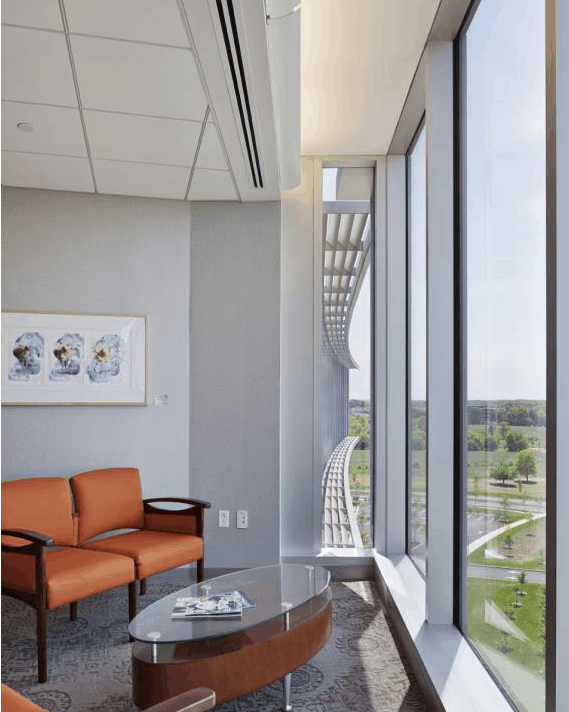Blog
Taking Care of Seniors When Designing Healthcare Facilities

A recent article in Healthcare Design Magazine talked of the importance of designing healthcare facilities with elderly patients in mind. In the article, it states “the senior demographic is projected to more than double by 2030, eventually accounting for close to 20 percent of the U.S. population.” Because of this, healthcare facilities must start focusing their designs on seniors and what will adequately support their needs. The pictures below show some examples of facilities who have implemented some of these features and designs.
To read the entire article in Healthcare Design Magazine and view more pictures, click here.

At UMCPP, sleeper sofas in each patient room accommodate overnight family stays and a family respite area offers an inviting, open atmosphere for social activities and group dining. Photo: HOK

Good Samaritan features visible signage, furnishings, and artwork to assist with senior wayfinding as well as areas to rest. Photo: BSA LifeStructures

Geared for seniors, the patient rooms at St. Mary’s Good Samaritan Regional Health Center in Mount Vernon, Ill., were designed by BSA LifeStructures with ample natural light, a family zone, self-controlled amenities, and a short route to the bathroom. Photo: BSA LifeStructures

Landmarks such as large canvases and bold colors facilitate orientation and reduce anxiety for the elderly at CAMH’s entry to geriatric services. Photo: Stantec Architecture

At the new 570,000-square-foot Center for Addiction and Mental Health (CAMH) in Toronto, designed by Stantec and C4 Architects, a large geriatric inpatient program is supported by wayfinding based less on signage and more on planning. As pictured here, a sightline through the building and beyond to the gardens helps orient patients. Photo: Stantec Architecture
Source: http://www.healthcaredesignmagazine.com/article/generational-shift







